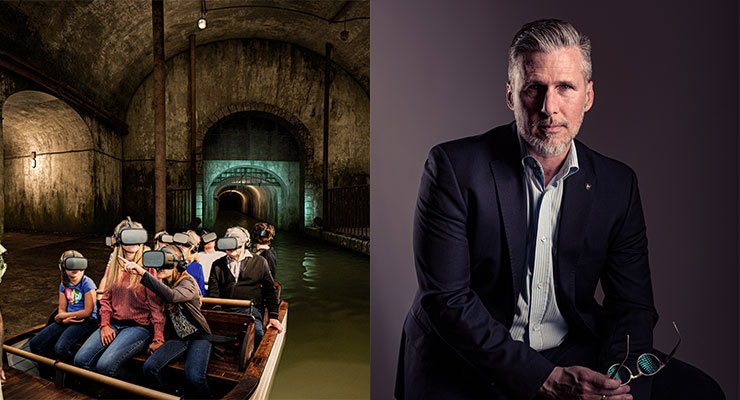The challenge arises when European malls and investors start equating a mall’s entertainment quotient with the adrenaline-pumping attractions of a theme park. While giants like Canada’s Edmonton Mall have successfully incorporated full-blown theme parks with heart-stopping roller coasters, it’s crucial to understand the vast differences in the operational dynamics and success criteria of malls and theme parks. The colossal scale of American and Asian malls may not be the best blueprint for Europe, at least for now. On the contrary, mall operators need to understand that modern technology can be used to create impressive experiences in the smallest of spaces.
The “Box” Approach
A typical approach among malls when establishing entertainment is to simply provide spaces or “boxes” for various activities – cinemas, nightclubs, e-sports arenas, and social gaming zones. These are repeatable, very generic activities that require very little to no management from the mall. But herein lies the catch. While these attractions do bring a specific value, they lack uniqueness. A cinema in a mall will likely showcase the same set of films as its counterpart a few miles away. Similarly, gaming arenas might cater to a niche audience, leaving a vast segment of potential visitors untouched.
So, the question arises: What does the future of location-based entertainment in European malls look like? How can they carve out a distinct identity while ensuring a broad appeal?
The Evolution of Mall Management
While the historic mall management strategy of providing spaces, or ‘boxes,’ aligns seamlessly with the primary objective of facilitating retail, it falters when the goal is to transform a mall into an experiential destination. The challenge? Recognizing that entertainment isn’t just an added perk in the modern retail landscape — it’s often the main draw.
Let’s investigate the reality: most malls offer a strikingly similar retail mix. With homogeneity being the norm, the pressing question for mall management becomes: “What makes our establishment special?” The difference often lies not in the stores but in the experiences. The ambiance, the attractions, and the unique offerings can turn a mall visit from a mundane shopping trip to an exciting outing. And this shift is becoming increasingly vital in drawing footfall.
Taking control of the experience: For malls aiming to become destinations, entrusting entertainment solely to third-party vendors, viewing it as another lease agreement, is a missed opportunity. Instead, proactive involvement by mall management in curating and overseeing entertainment ensures the offerings are not only high-quality but also exclusive to that mall. Such signature attractions can position a mall as a local favorite and tourist hotspot, attracting visitors far beyond the traditional shopper catchment area.
In Search of uniqueness: To truly set a mall apart, its entertainment offerings must be unparalleled—experiences that cannot be replicated or found in neighboring establishments. The goal should be to craft moments that can be cherished, remembered, and associated solely with that particular venue. This exclusivity will transform malls from mere shopping destinations to landmarks of leisure and entertainment.
Inner-City Attractions: The Transformation of Retail Malls
Having made a significant mark in theme park and museum design, Clostermann Design’s shift over the past 14 years to “inner-city attractions” has been innovative and insightful. These attractions stand apart from conventional play arcades or cinemas as experiential journeys rooted in compelling narratives. Central to Clostermann’s philosophy is the intertwining of unique identity, atmospheric immersion, and local relevance. Unlike generic experiences, their creations delve deep into local culture and history. This approach elevates the visitor’s engagement and fosters a profound connection, turning fleeting visits into lasting memories.
There’s an evident hunger for experiential learning in today’s evolving entertainment landscape. Clostermann Design addresses this by seamlessly blending entertainment with educational elements, ensuring that visitors don’t just passively consume but actively engage and learn. Given these facets, it becomes clear that “inner-city attractions” emerge as potent tools in transforming traditional retail malls when fused with a holistic entertainment and atmospheric concept. They don’t just supplement the retail experience; they redefine it, turning malls from mere shopping venues into vibrant destinations.
Compact Yet Captivating: The Unique Appeal Of Inner-City Attractions
Space constraints versus immersive experiences: Theme parks, with their sprawling landscapes, are in stark contrast to inner-city attractions, which often operate within confined spaces. In such urban setups, every square meter counts, making design efficiency paramount. The challenge isn’t just to fit into limited spaces but to create expansive experiences within them.
Quality over quantity: If theme parks are akin to lavish all-you-can-eat buffets, offering a bit of everything, inner-city attractions can be likened to gourmet dishes – specialized, distinct, and carefully crafted. They don’t present many attractions but focus on delivering one outstanding experience. This unique appeal must justify the ticket price, demanding a laser-sharp focus on the attraction’s distinctiveness and quality.
Rigorous design and high returns: The compact nature of inner-city attractions necessitates heightened creativity and meticulous design. Every element must contribute to the overall experience. What is the reward for this rigorous approach? A favorable balance of investment to profit. Unlike the heavy infrastructural costs of theme parks, inner-city attractions often achieve better return-on-investment ratios. Case in point: “Time Travel Vienna.” Built on a modest budget of in 2011, it attracts up to 300,000 visitors annually and boasts dedicated fan clubs, highlighting the potential of well-executed compact attractions.
Inner-City Attractions: Maximizing Impact In Minimal Spaces
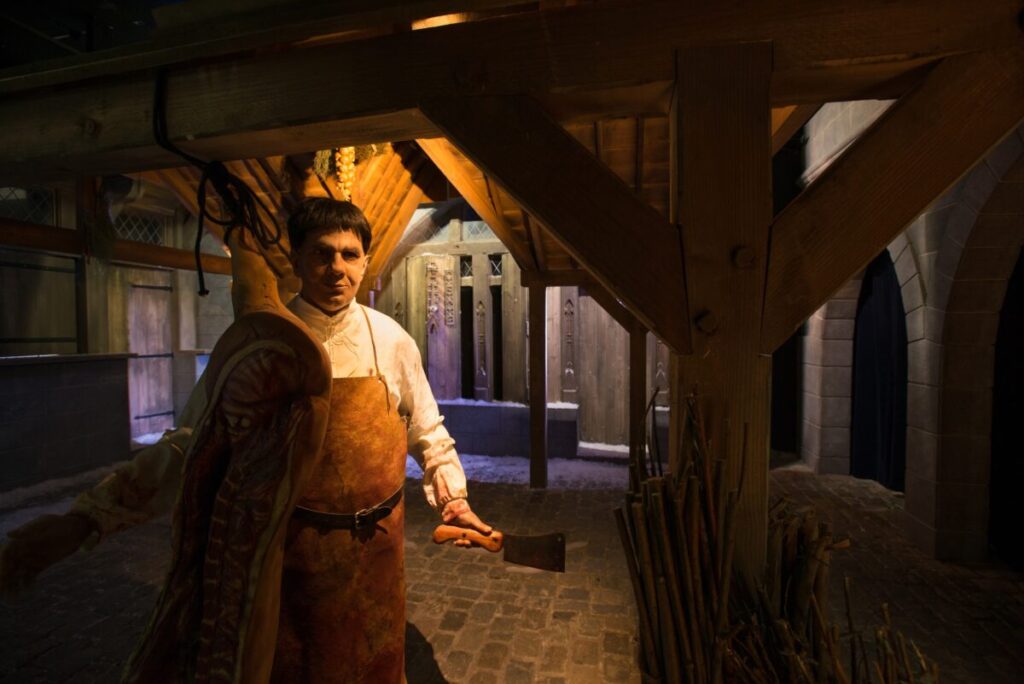
Historium Brugge
Local touch: At the Historium Brugge, the past unfolds before visitors in an immersive narrative set in 1492. As they traverse through eight meticulously crafted rooms, they journey into replicas of Brugge’s medieval world, reliving the city’s bygone era. To complement the historical immersion, a section is dedicated to changing exhibitions featuring a VR experience. Culminating this unique offering is a quintessential Belgian touch – a beer bar seamlessly integrating an authentic Belgian ambiance.
Time Travel Vienna
Relevance and appeal: Established in 2011, Time Travel Vienna has seen a steadily increasing influx of visitors, touching nearly 300,000 annually. Beyond just another tourist stop, this attraction delves deep into 2,000 years of Vienna’s history with an engaging blend of emotion and humor. Its ability to draw 35% of its audience from local repeat visitors underscores its resonance with local narratives and the power of well-crafted storytelling.
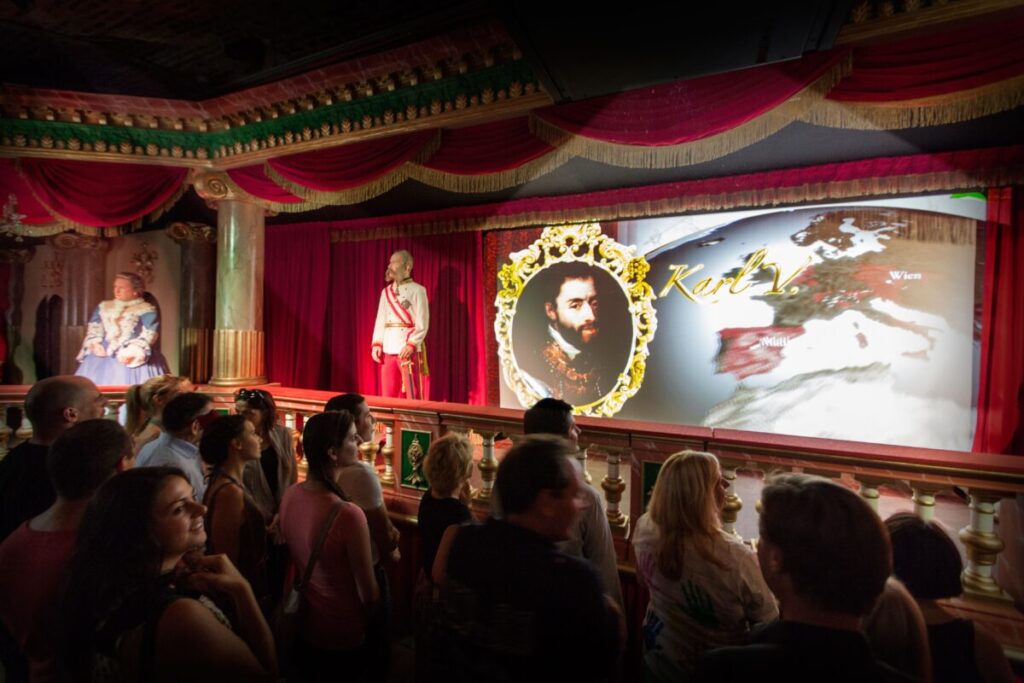
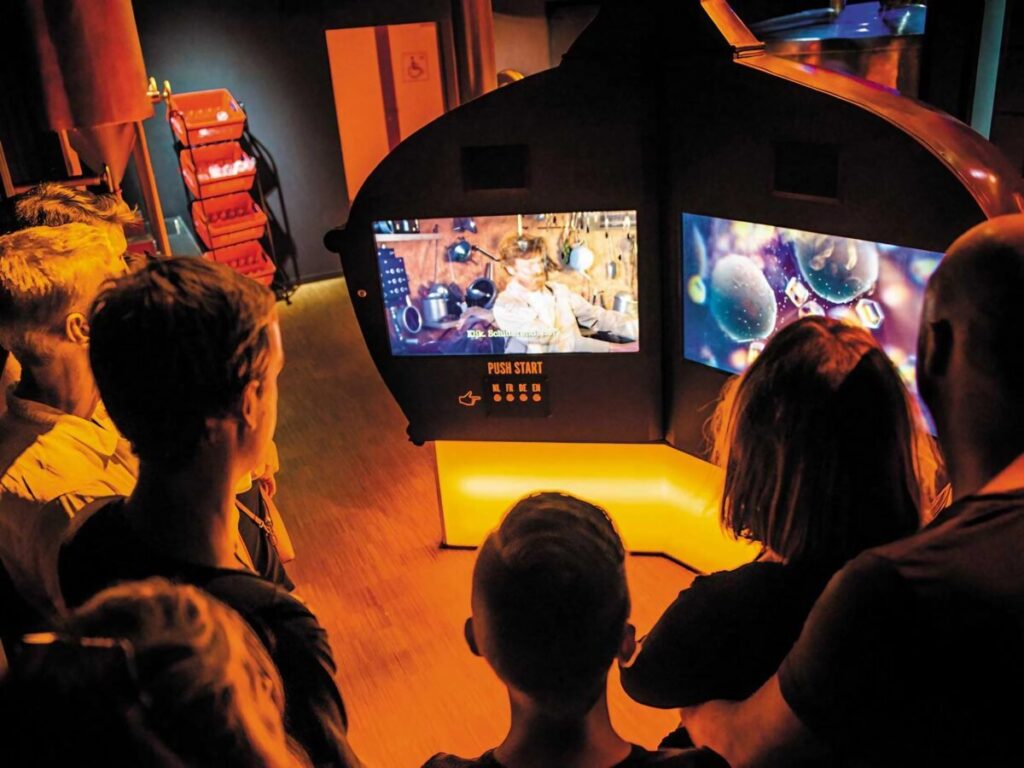
De Koninck Brewery Antwerp
Transformation & synergy: What began as a modest brewery tour in Antwerp evolved into one of Belgium’s paramount tourist hotspots, revitalizing an entire neighborhood. Centered on an immersive brewery tour, De Koninck complements its primary attraction with artisanal stores such as chocolatiers, butchers, and cheese specialists. While the brewery draws in visitors, the curated retail offerings ensure they linger, creating a harmonious blend of attraction and commerce.
Sisi’s Amazing Journey VR, Vienna
Compact innovation: Sisi’s Amazing Journey shows how cutting-edge technology can craft expansive experiences within limited spaces. Occupying less than 150 sq m, this former underwear store in Vienna now provides a VR Dark Ride that rivets visitors with tales of Vienna’s iconic empress. As retail spaces evolve, harnessing technologies like VR can offer a captivating blend of education, entertainment, and efficient space utilization.
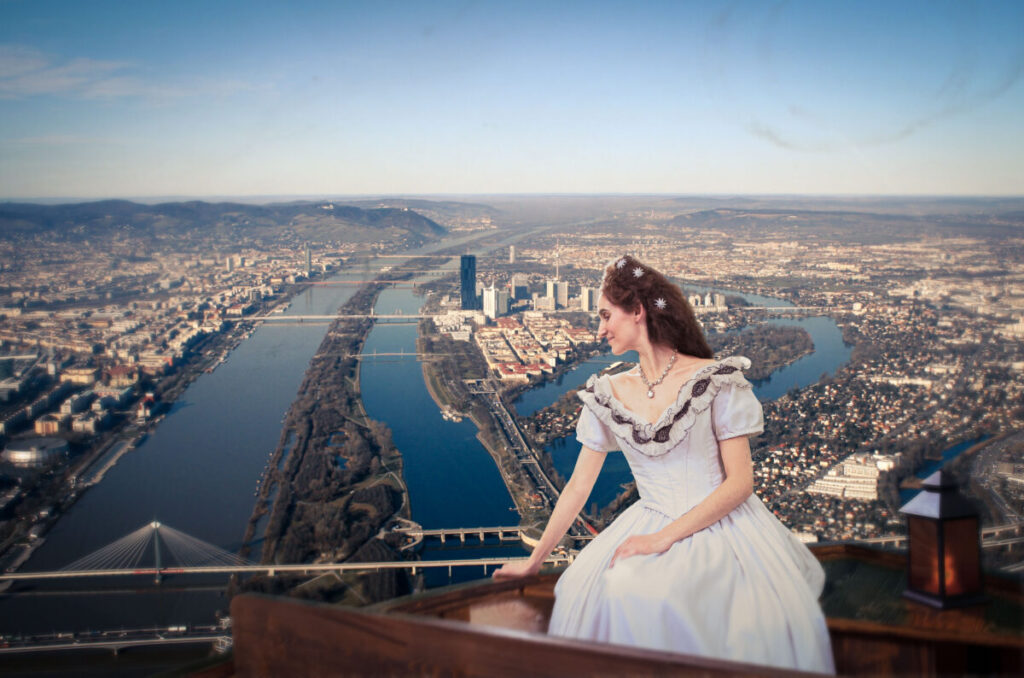
Harnessing The Power of Narratives
Drawing inspiration from the success of Sisi’s Amazing Journey, several ingenious concepts emerge, especially when considering the integration of such attractions within a mall setting. These experiences don’t just serve as captivating diversions but can play an instrumental role in shaping a mall’s identity and appeal.
Value proposition: Introducing entertainment of this caliber is more than just adding another amenity to the mall. It acts as a strategic marketing tool, potentially transforming the entire brand image of the mall. By offering a unique experience like Sisi’s Amazing Journey, malls can begin to transition from mere shopping hubs to holistic destinations. Notably, while these attractions amplify the mall’s brand equity, they also offer a tangible return on investment, ensuring brand enhancement and financial viability.
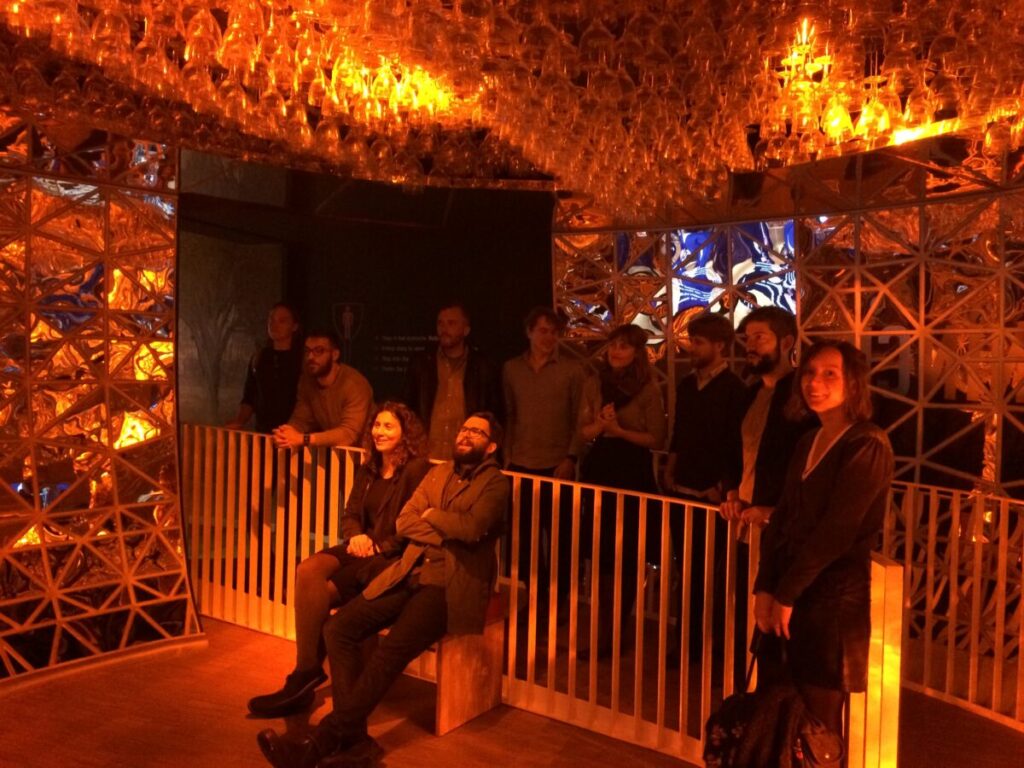
Story-driven experiences: A recurring theme in all of Clostermann Design’s inner-city attractions is the central role of storytelling. While technological innovations and special effects amplify the experience, the narrative captures the visitor’s imagination. It’s not the ride or the VR tech that lingers in the mind but the tale it unfolds.
Timelessness of narratives: Stories have an inherent longevity. They are not bound by time, technology, or trends. As they evolve, they weave themselves into the fabric of culture, becoming enduring symbols and landmarks. For a mall aiming to reinvent itself as an entertainment destination, anchoring its offerings in timeless tales is a smart and sustainable strategy. Investing in a compelling story draws visitors initially and ensures continued engagement, making it a cornerstone of the transition to entertainment-centric spaces.

MATTHIAS CLOSTERMANN
Matthias Clostermann is the Owner and General Manager at Clostermann Design Ltd. Clostermann Design creates sophisticated narrative experiences. With nearly 30 years in the location-based enter[1]tainment sector, their impact spans theme parks, museums, casinos, and more across 43 countries. Leveraging a vast spectrum of skill and experience, the boutique creation firm delivers holistic concepts that ensure visitor satisfaction, attract audiences, and yield profits for investors and stakeholders. Offering more than just design, they provide comprehensive services from consultancy to turnkey installations, ensuring attractions are conceptualized and ready to operate. Their global reach and meticulous craftsmanship position them as luminaries in the industry.
